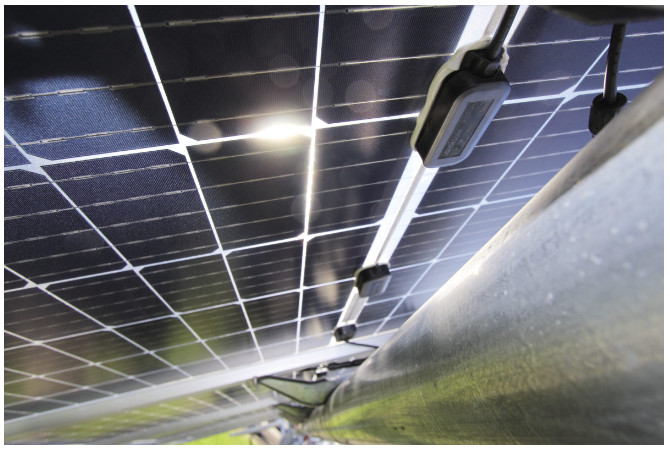Solar power technology is advancing every day. All over the world people are using renewable energy from the sun – from vertical solar on the sides of buildings, to panels floating on top of water. Engineers and even artists have created aesthetically pleasing and highly efficient ways to collect an abundance of solar energy. Here are some of creative applications of generating solar power.
1. The Solar Flower
Smart Flower has created a giant, high-tech flower that produces tons of power. Like solar trackers, the Solar Flower rests on a base that enables it to maximize solar production by turning its petals (made from solar panels) toward the sun. The petals also open and close according to the amount of sunlight that is available. The Solar Flower recently installed at the Benjamin Franklin Institute of Technology in Boston, is attracting students and gaining momentum for renewables and climate action among youth.
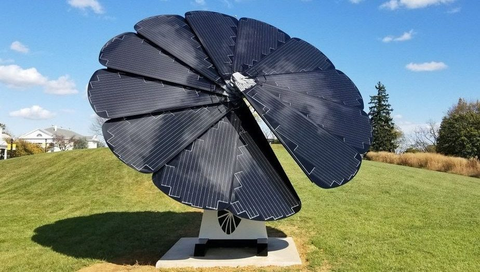
2. Little Sun
Olafur Eliasson, a popular sculptor in Germany, is providing children around the world with free light. Little Sun is a small, lightweight, and wearable solar-powered lamp that’s designed to be an appealing but functional necklace. Eliasson calls it, “a work of art that works in life.” Its purpose is to help people who have little access to electricity since electricity is often scarce in developing countries. Some people in developing nations have access to kerosene lamps for lighting, but burning kerosene fuel emits toxins that can be damaging to human health. Little Sun provides people with a beautiful, healthy, and free way to access light.
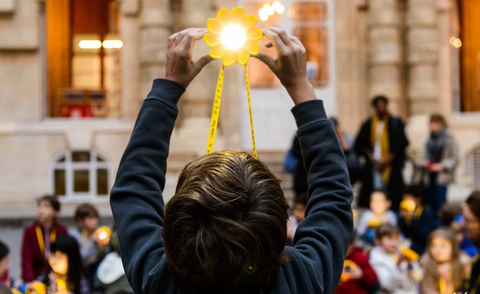
3. Sonic Bloom
Created by American artist Dan Corson, Sonic Bloom is a playful and interesting solar display located outside of the Pacific Science Center in Seattle, WA. Seattle City Light’s Green Up Program sponsors projects like Sonic Bloom in hope that it will promote interest in clean energy by catching public attention. Beyond their beautiful sculptural nature, the flowers are capable of creating light shows with music. Corson also strategically tilted the flowers at different angles and directions, so viewers visiting the Pacific Science Center can study the flowers’ performance due to their orientation to the sun.

4. Solar-powered Charging Stations for Public Use
In 2016, Massachusetts Governor Charlie Baker unveiled a plan to create 13 solar-powered mobile device charging stations across the state. These stations would be placed in popular public facilities such as the Rose Kennedy Greenway in Boston, MA. With endless busy schedules, the charging stations let the public relax with a cup of coffee, and recharge their cell phones at no cost. One example of this is the Soofa, which was developed at MIT. The charging stations are free for the public to promote interest in solar on a grander level.
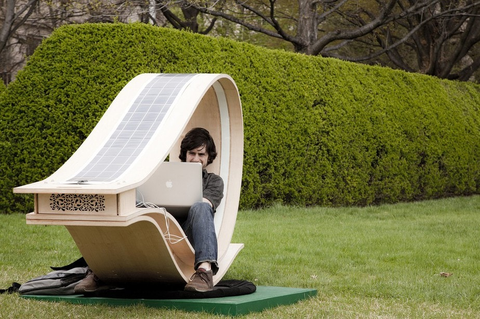
5. Solar Thermal
Solar developers created a giant solar oven by using a field of reflective mirrors, otherwise called concentrated solar or solar mirroring. Concentrated solar traps heat by using mirrors to reflect sunlight and send the sun’s rays to the receiver, which is stored and used to produce electricity. Concentrated Solar Thermal systems (CSP), are not the same as regular solar panels; CSP systems concentrate the sun’s radiation to heat a liquid substance which is used to drive a heat engine and an electric generator. These temperatures generated are often above 1,000 degrees celsius, close to a quarter of the sun’s surface temperature.
Cement, steel, and other industrial companies need tremendous amounts of heat to produce materials. For hundreds of years, these industries have utilized limited harmful energy sources such as fossil fuels. However, by using Concentrated Solar Thermal Systems, we can lessen our dependence on fossil fuel crisis on the mega-corporate level.
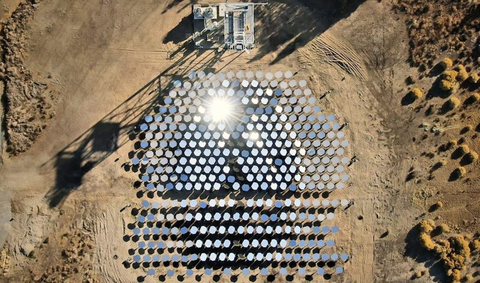
Continuous Innovative Solar Choices
At the end of the day, solar power is an essential energy source that makes all life on Earth possible. Each generation of engineers revolutionizes how solar energy is harnessed, distributed, and appears to the public.
Frequently Asked Questions
PV syst-based comparative analysis for bifacial, monofacial PV projects
Scientists in Palestine say that controlled tests show that bifacial solar panels produce 6.81% more electricity than monofacial PV modules.
How generous subsidies helped Australia to become leader in solar power
For a brief period over several weekends this spring, the state of South Australia, which has a population of 1.8 million, did something no other place of a similar size can claim: generate enough energy from solar panels on the roofs of houses to meet virtually all its electricity needs.
Series and parallel connection of solar panels? How to choose?
Solar panels connected in series are linked end to end. The current remains the same as that of a single panel. In a parallel configuration, solar panels are connected side by side, with the positive terminals connected to each other and the negative terminals likewise.
To learn more about photovoltaic power generation, please follow SOLARPARTS official website:
Twitter: Solarparts Instagram: Solarparts
Tumblr: Solarparts Pinterest: Solarparts
Facebook: Shenzhen Solarparts Co., Ltd.
Email address: Philip@isolarparts.com
Homepage: www.isolarparts.com


